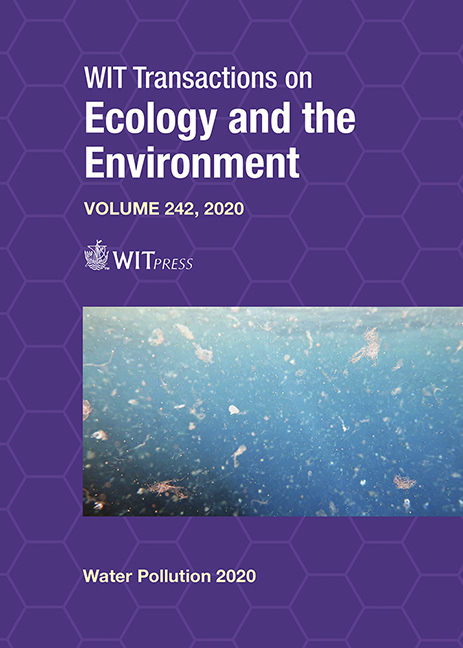ABATEMENT OF MICROPLASTICS FROM MUNICIPAL EFFLUENTS BY TWO DIFFERENT WASTEWATER TREATMENT TECHNOLOGIES
Price
Free (open access)
Transaction
Volume
242
Pages
12
Page Range
15 - 26
Published
2020
Paper DOI
10.2495/WP200021
Copyright
WIT Press
Author(s)
JAVIER BAYO, JOAQUÍN LÓPEZ-CASTELLANOS, SONIA OLMOS
Abstract
This paper discusses the role of two different wastewater treatment technologies in the removal efficiency of microplastics from the final effluent of an urban wastewater treatment plant; i.e., a membrane bioreactor as an advanced wastewater treatment technology and rapid sand filtration as a tertiary treatment after an activated sludge process. Fourteen different polymer types were identified in all wastewater samples, mainly represented by low-density polyethylene (71.89%), high-density polyethylene (5.44%), acrylate (5.24%), polypropylene (5.22%), polystyrene (4.24%), and nylon (2.56%). The main forms isolated were fibres (61.2%), followed by films (31.5%), fragments (6.7%), and beads (0.6%). The main size interval corresponded to 1 and 2 mm, accounting for 28.2%, 37.3%, and 36.8% for the influent, membrane bioreactor, and rapid sand filtration, respectively. A total of 480 microplastic particles were isolated in all wastewater samples, with an average concentration of 2.16 ± 0.42 items l-1, and removal rate percentages of 79.01% for the membrane bioreactor and 75.49% for rapid sand filtration. Both technologies proved to be more efficient removing particulate microplastics (98.83% and 95.53%, respectively) than fibres (57.61% and 53.83%, respectively), showing a clear escape into the aquatic environment for fibres. The average microplastic size displayed a statistically significant increase from the influent of the sewage treatment plant (1.05 ± 0.05 mm), to rapid sand filtration effluent (1.15 ± 0.08 mm) and membrane bioreactor (1.39 ± 0.15 mm) (
Keywords
microlitter, microplastics, MBR, RSF, wastewater





